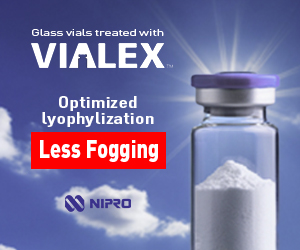A quick Internet search will tell you that downtime in the pharmaceutical industry is extremely expensive!
With estimates ranging from hundreds of thousands to millions of dollars per hour, a single major incident can cost $5–10 million.1
ids-indata, for instance, predicts potential losses of £500 million to £1 billion throughout the UK in 2025 because of extended shutdowns.2
Incidents such as major equipment failures, batch contamination or cybersecurity breaches can all lead to lengthy and costly manufacturing delays, the impacts of which go far beyond production.
Downtime not only halts the entire process but also leads to wasted materials, labour costs and potential compliance issues.
Benoit Dehaene, Head of Customer Care Pharma at GEA Pharma & Healthcare, is well-versed in the hazards of non- or poorly functioning machinery in the drug production environment.
Whilst on-site to discuss a lifecycle package proposal recently, the customer mentioned that, although they were running three GEA tablet presses, no preventive maintenance was being done.
Adjustments were only being implemented when something went wrong, which Benoit pointed out was a very expensive way of operating high-end equipment.

Subsequent calculations revealed that, on average, the presses were only operating at approximately 80% of their maximum capacity. The upshot was a notable quantity of out-of-specification (poor quality) tablets and premature tooling wear.
The market value of the losses depends, of course, on the value of the end products and how often you use the machine.
Profits associated with the inefficient manufacturing of low-cost, high-volume tablets might not be adversely affected, but that certainly wouldn’t be true for highly priced, low-volume dosage forms such as oncology drugs or hormone-based therapies.
The financial implications will vary from customer to customer, acknowledges Benoit, but 20% downtime could easily translate into hundreds of thousands of dollars.
We would certainly encourage users of our presses to look at those numbers and consider the following:
- What would that 20% mean to me?
- How much product would I be losing?
- What would it cost to stop, repair or replace that piece of equipment?
By implementing predictive maintenance strategies, notes Benoit, pharmaceutical companies can significantly reduce downtime, optimise their resource allocation and extend the lifespan of their equipment.
Investing in a lifecycle package incurs an expense, he says, but it’s a much safer investment than simply waiting for your machine to break down.
“Maintenance does have a cost, but non-maintenance has a much higher one,” he says.
There’s also a sustainability angle to consider as well, he adds, which is top of mind for many organisations these days.
If plant is regularly maintained, it will work at its optimum capacity. This might be in terms of not using more energy than it should, not drawing more water than is required or, in the long-term, not needing to be replaced or taken offline to service as frequently.
As such, a lifecycle package is better for the environment, better for the machinery and better for your bottom line.
It's important for GEA to be seen as more than just a supplier; the company has positioned itself as a trusted adviser and encourages customers to be proactive, consult with always-available experts and schedule regular health checks.
“We aim to prevent downtime in the first place,” notes Benoit.
For any company’s green credentials, operational excellence and optimum output, the advantages of having well-maintained and fully functional plant are clear.
A lifecycle package from GEA will not only deliver peace of mind, but there are significant long-term cost-saving and reputational benefits to be gained as well.
It’s an investment that will pay dividends for years to come.
GEA Customer Portal
Acting as a digital hub, the GEA Customer Portal is a focal point of contact for users and comprises business-specific solutions and apps that help with aspects such as condition monitoring and predictive maintenance.
It provides customers with a comprehensive overview of all their GEA assets. The eCatalog, for example, offers a convenient way to submit a quote request, then identify, view and select spare parts using an interactive 3D virtual tool.
The portal, notes Dietrich Mertens, Head of Digitalization, Pharma & Healthcare, at GEA, will be the default way for customers to reach out to us, connect with an appropriate expert and get the information they need in a timely way.
In every instance, whatever the question or inquiry, it will be routed to the right person in our organisation,” he adds.
References





